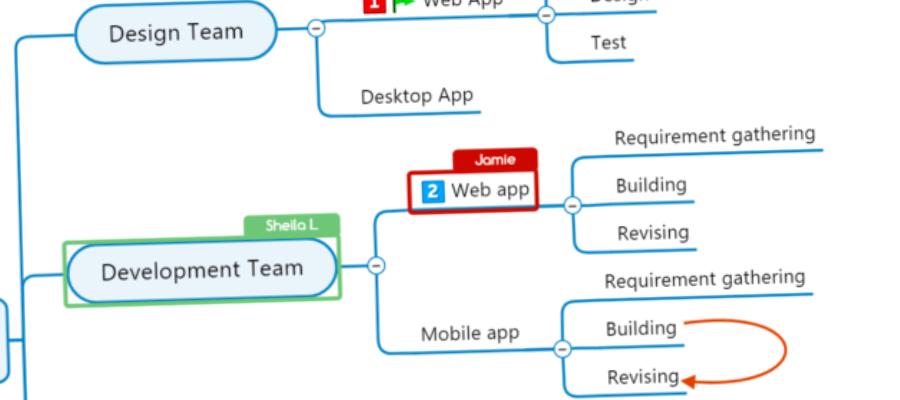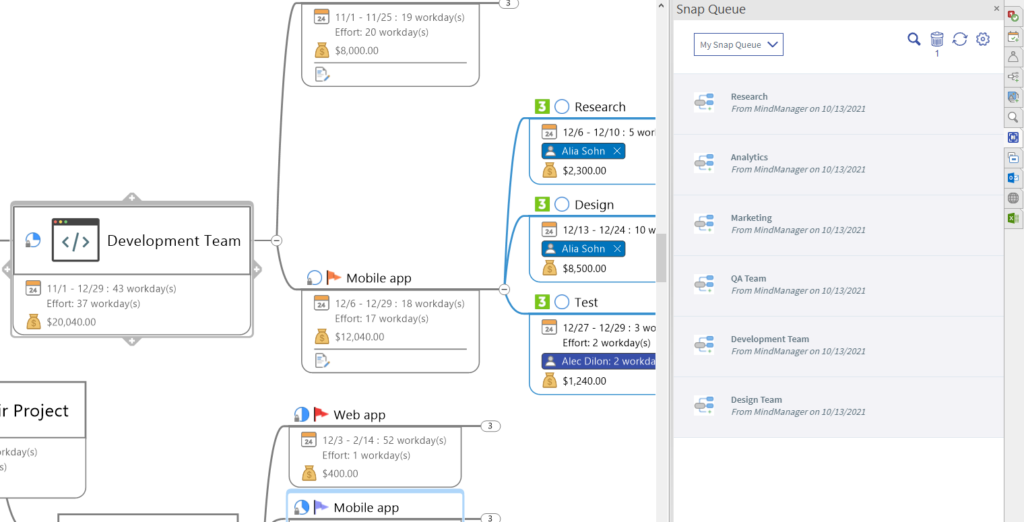When the pandemic hit, any business software developers who only offered desktop solutions quickly found themselves at a disadvantage. Remote workers needed web-based collaboration tools to continue working outside the office. They no longer had access to their favorite desktop productivity software.
Corel, with its industry-leading MindManager mind mapping software, found itself in this position. The last time it offered a web-based tool, it was based on Adobe’s now defunct Flash platform. More recently, it developed an HTML5 version, but it only had basic functionality and was only offered as part of a Microsoft Teams mind mapping tool.
Several weeks ago, Corel came back roaring with a fully integrated, multi-platform update to MindManager that is heavily focused on collaboration and is perfectly aligned with the needs of today’s workers. It includes new versions of MindManager for Windows, Mac, Chromebook, web, Microsoft Teams, iOS and Android, plus an improved MindManager Snap tool. This ecosystem enables workers to co-create and share mind maps on any platform at any time – and to do so simply and elegantly.
Here’s a closer look at what is included in the new MindManager ecosystem and what it makes possible.
Cross platform co-editing
This capability is now available for the first time on all of the platforms I just described. Changes are made in real time, enabling team members to work together on mind maps regardless of which platform they’re using. Whenever a team member adds or edits a topic, a colorful visual indicator with their name frames the topic. This makes it easy for team members to to see feedback and make adjustments as needed – faster.
In the first version of co-editing several years ago, the originator of the mind map had to be present and co-editing was only possible in the web version of MindManager. Those limitations have been removed with this new platform. Co-editing can be started and managed from any platform in the MindManager suite.
Mind maps can be stored on five popular cloud-based services: Google Drive, OneDrive, SharePoint, Box and Dropbox.
Enhanced map part sharing
MindManager Snap is a content capture tool that allows users to easily capture, receive and share content any time, from any device. In its original incarnation, it was designed a personal tool, which you could use to capture inspiring bits of content – links, snippets of web pages and images – while away from your mind maps.
Your captures appeared in a queue on the right side of your workspace, and could be easily dragged and dropped into your mind maps. In this new release, Snap’s role has been expanded to become a collaboration tool, enabling map part sharing with your team members.
Team members can now share sections of their diagrams with others, quickly and easily, or for their own use in different mind maps. Doing so is as simple as dragging the map branch you want to share into the Snap queue on the right side of the MindManager workspace. Super intuitive!
Any enhancements you’ve added to topics, such as attachments, status indicator icons and more, are retained when you share part of a mind map with MindManager Snap.
This new feature works effortlessly to enhance collaboration in new ways. For example, let’s say you’re creating a major proposal that requires input from several members of your team. You start by creating an outline of the plan in MindManager. Once you have its basic structure fleshed out, you send parts of it to specific team members. a branch of the map to you and your peers. Each of them can work independently, building out their sections of the plan. When they’re done, they can use Snap to send their work back to you. You can then drag and drop them into your master copy of the proposal mind map.
Another scenario is if a mind map you’re creating contains sensitive information. You can use MindManager Snap to share those parts of the diagram that aren’t proprietary.
What I especially like is how seamlessly this works. In the context of being able to save segments of diagrams for re-use, the concept of “map parts” is still relevant. But in terms of what it empowers in he realm of collaboration, it feels antiquated. With this enhanced tool, you can simply share what you need with your collaborators – quickly, easily and intuitively.
MindManager Web
This new application is built in HTML5 and enables you to perform many of the tasks that formerly required the desktop mapping tool. For example, it now enables task management and sophisticated filtering of map topics. You can also utilize different views, such as MindManager’s kanban, column-based view and can perform roll ups of task dates and costs.
Certain advanced capabilities, such as creating GANTT charts, formulas and smart rules, still must be done using one of MindManager’s desktop tools.
Status overlay bar
A new status overlay bar, which appears in the upper left corner of the workspace, shows a variety of useful information in a compact format: where the document is saved, collaborators working on it with you, your editing rights, if auto save is turned on or off, and if you have applied any filters to your mind map. This enhancement appears on all other map editors in the new MindManager ecosystem. One of the other things you can do from this small but mighty control center is generate and copy a web link to the mind map you’re working on.
MindManager Windows
The latest version of MindManager Windows supports all of the enhancements already mentioned, including map co-editing, built-in collaboration via MindManager Snap and the new status overlay bar. It also includes a number of performance enhancements, including improved smart rule performance and support for Windows 10 language dictionaries.
MindManager Mac
Enhancements to the latest version of MindManager Mac include the ability to share documents via SharePoint and OneDrive, the addition of topic tags and the more modern way of displaying topic enhancements that debuted in the last version of MindManager Windows.
Doubling down on enterprises
As work has moved to the web during the last two years, it has become critical for enterprises to ensure that their data is being stored and used securely. Accordingly, MindManager now supports a host of IT protocols, including SOC 2 certification (mirrored servers for disaster recovery), Citrix readiness and single sign-on compliance.
Admin options
Admins can turn on and off co-editing, use of MindManager Snap and the ability to publish mind maps. They can also specify standard locations for storing files. Corel views this as a version 1.0 of this control center and has indicated that future versions will add more granular admin options.
Learn the basics
MindManager now includes a series of mini-tutorials on the new map/template screen. These interactive lessons teach you how to use a particular feature of MindManager and then give you an opportunity to try what you’ve learned – ideal for new users, who may be intimidated by mind mapping at first. Nice!
Pricing
Co-editing is available to customers who invest in a platform subscription as well as users of MindManager’s Microsoft Teams application. MindManager Essentials, which consists of MindManager Web but doesn’t include any collaboration capabilities, is US$99 per year. MindManager Professional, which includes all platforms and collaboration tools, retails for US$169 per user.
Conclusion
It’s exciting to see the major commitment Corel has made to ensure that MindManager remains relevant and effective in today’s Brave New World of work. I especially love the direction in which MindManager Snap and map part sharing have evolved. This dynamic duo go beyond basic collaboration to pioneer new ways of working together. I can’t wait to see where this talented development team takes the MindManager platform next!



Leave a Reply